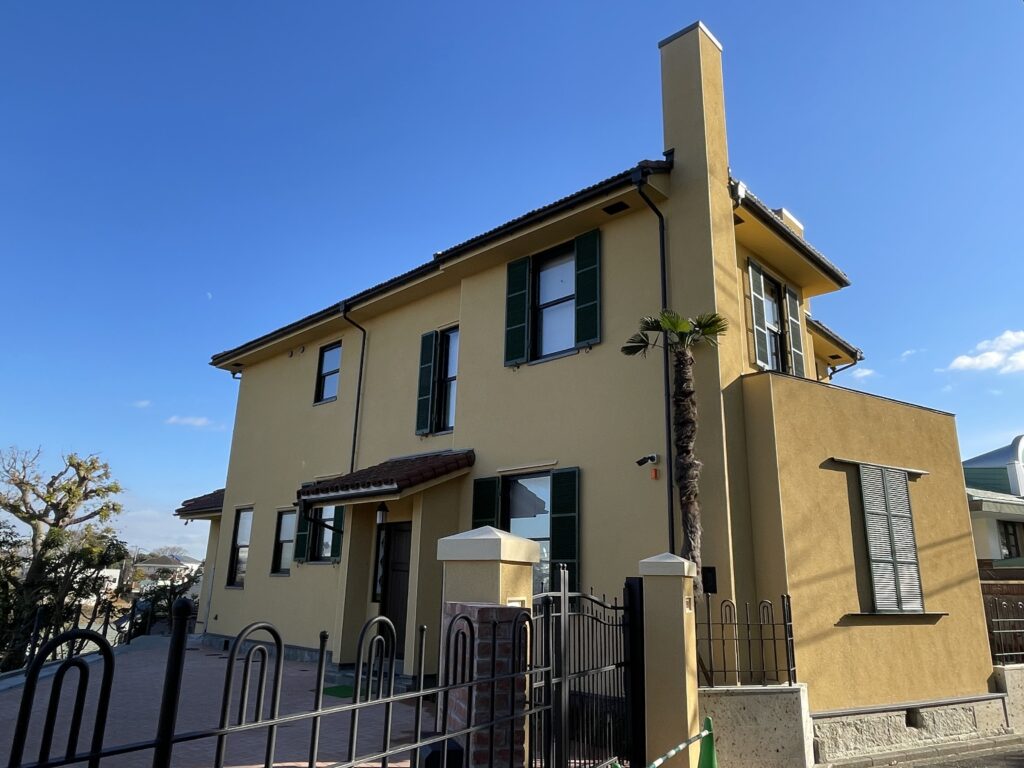Antonín Raymond (1888-1976) had a long and influential career as an architect in Japan and the U.S., including four existing buildings in Yokohama. Born in Bohemia, then part of the Austro-Hungarian Empire (now the Czech Republic), Raymond emigrated to New York in 1912 and soon began working with Frank Lloyd Wright at his landmark structure, Taliesin. Arriving in Japan on New Year’s Eve in 1919, he joined Wright’s team in Tōkyō to build the iconic Imperial Hotel, although artistic differences separated the two soon after. Raymond remained in Japan for most of the remainder of his long career, interrupted only by World War II.
Raymond’s first and most influential independent design in Japan was Tōkyō Women’s Christian University, including its pre-war campus and its chapel, still standing today. Other university structures also show his innovative use of exposed concrete. He took on a wide variety of contracts, including embassies, churches, schools, golf clubs, and corporate headquarters. Many of his residential projects combined durability with respect for Japanese tradition, including fusuma, shōji, and timber.Raymond’s best-known work in Yokohama is the Ehrismann Residence in Motomachi Park, built in 1926 for a Swiss merchant. It was dismantled in 1982 but reassembled eight years later by the city government, which now opens it for free to the public. Its wide windows invite the surrounding greenery into the large rooms. In the cold of winter, the steam heaters in each room are especially welcome. Another house in Yamate-chō believed to be Raymond’s design has recently been refurbished by its owner, head of the Monte Rosa confectionery firm. The Rising Sun Petroleum Company (now Shōwa Shell) hired Raymond to build its employee dormitory in 1928, and this low-slung, functional building is now part of the Yamate campus of Ferris University. A walk down Isezaki-chō shopping street will reveal yet another Raymond gem: the Fujiya Restaurant (1938), beloved by generations of hamakko.


